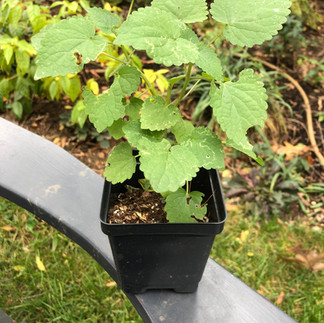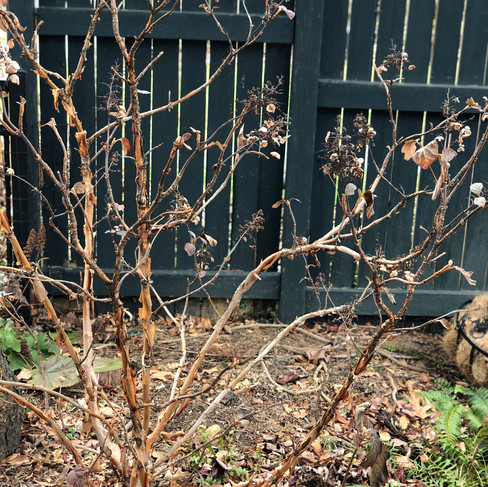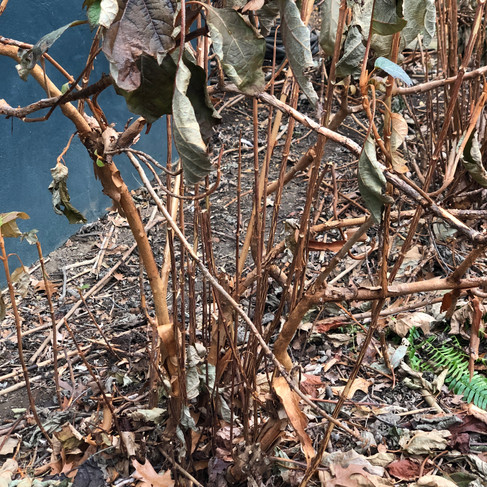Chesapeake Native Plant Gardens: January
- Nuts for Natives
- Jan 13, 2023
- 3 min read
Updated: Jan 19, 2023
Possibilities for watching and doing!

Observing
Back in 2018 when I had the seed of an idea to start the Nuts for Natives website and blog, I took a webinar hosted by self taught gardener, author, podcaster and now New York Times gardening columnist Margaret Roach. For about $15, as I recall, participants were treated to the most enchanting photographic tour through Margaret’s spectacular two acre garden in New York’s Hudson Valley. She talked about a way to build a garden, nature and native plants. During the webinar, she mentioned she did some consulting so I contacted her to ask for an hour or two of her time to get advice on how to get started with my idea. She was enthusiastic and oh so helpful. A few months later, she said, through my Instagram posts, she noticed “I was out there observing.” I wasn’t quite sure exactly what she meant. In my mind, I was trying to post photos to help people see the fun and beauty of native plants!
Since then, I have truly come to understand what Margaret was saying. Observing. January is one of the very best months to do this in your garden. All the distractions of flowers and foliage are minimized and you can focus on the bare bones. If you look closely (I know... what does that mean?!), you start to see new things every day. Like this passion flower fruit (Passiflora incarnata). My vine has been producing these fruits now for a couple of years but I usually see them in August and September when they look like small granny smith apples, though much softer. But look at this one. Amazing! Thank you Margaret.
Seed starting
There is still time if you haven’t taken the plunge yet. The absolutely worst thing that can happen is that none of them will germinate. If you don’t plant any, you get the same result! More info here.
Pruning
Winter is the best time to look at your shrubs to see what needs to be pruned. Most shrubs can be pruned now. The only caution is if you a pruning a shrub that flowers on old wood, like the oakleaf hydrangeas (Hydrangea quercifolia), know you may be cutting off next year's blooms. Since I never prune more than a third of a shrub back at a time, based on expert advice, I never worry too much about that.
Even if you don't plan to prune during this part of the year, it's still and ideal time to note what you do want to prune. I noticed a couple of oakleaf hydrangea shrubs in our garden. The one on the left is very elegant and the branch structure looks good even in winter. The branches head outward, there are no crossing branches and you can really see the texture of the bark. On the oakleaf hydrangea to the right, a number of suckers have grown straight up through the shrub while several older, thicker branches cross other branches. Removing those will give the shrub a better shape. It would be harder to see all that once the shrub begins to leaf out.
Starting New Dogwood Shrubs
Last year, while visiting with gardener Karen Royer in Severna Park, Karen shared one of her favorite tips for creating new shrubs. She cuts branches of red twig dogwoods (Cornus sericea) to decorate containers for the holidays. After, she leaves those branches in the pots where they will receive light and water and waits for them to root. By the time mid-summer rolls around, she usually has new stems that have rooted and can be planted out.
Red twig dogwoods can be pruned in two ways. One is to cut a third of the shrub back every year or so as I do with the shrub above on the left. This allows the shrub to grow a bit larger. Cutting out the oldest, thickest stems which tend to lose the bright red color encourages some new growth.
The other is to cut the entire shrub back to 6" or so in late spring as above on the right. This tends to keep the shrub a bit smaller overall. It also encourages lots of new growth with thin branches with brighter color. You can do this every couple of years or so.
Either way, those thinner, newer branches are great for starting new shrubs. Pretty easy!
Assessing your Winter Garden

Evergreens, branching structures of deciduous shrubs and trees, berries and perennials make the winter garden. There is no better time to think about where you might want to add these. All of the clutter is gone and your garden will speak for itself.
January in the native plant garden. Calm and restful!





























Comments